ITRC: Introduction to Hydrocarbons Training
Live Webinar: Tuesday, January 13, 2026, 1:00PM-3:00PM EST (18:00-20:00 GMT)
Sponsored by: Interstate Technology and Regulatory Council
Petroleum is a complex mixture of many compounds. Regulatory and technical guidance documents commonly focus on the hydrocarbon components of that mixture, or perceived risks that they present. However, focusing on a specific area of concern often causes practitioners to overlook other aspects of a release. For example, concerns related to exposure to total petroleum hydrocarbons (TPH) risks may be overlooked while pursuing concerns related to light non-aqueous phase liquid (LNAPL) recovery or petroleum vapor intrusion (PVI).
This class is designed to provide a basic overview of hydrocarbon behavior in the subsurface and how to scientifically assess concerns arising from the release of petroleum products into the environment. It will highlight key issues that help identify and manage TPH, LNAPL, and PVI risks together. Key concepts will include:
- Fundamentals of petroleum hydrocarbons
- Petroleum chemistry
- How TPH, LNAPL, and PVI are related
- Building an integrated conceptual site model (CSM)
- What is a CSM…what is its purpose?
- When is a CSM complete?
- Identifying and managing the risks from petroleum hydrocarbons
- Defining LNAPL risks based on acute, saturation, composition, or aesthetic concerns
- Emphasize the importance of biodegradation in risk management decision making
- How to select remedial goals and remedies that align with your goals
This course is based upon three separate Guidance Documents developed by ITRC that address the course content in detail:
- Light Non-Aqueous Phase Liquid (LNAPL), LNAPL Site Management: LCSM Evolution, Decision Process, and Remedial Technologies (LNAPL-3)
- Petroleum Vapor Intrusion (PVI), Fundamentals of Screening, Investigation, and Management (PVI-1)
- Total Petroleum Hydrocarbon (TPH), TPH Risk Evaluation at Petroleum-Contaminated Sites (TPHRisk-1)
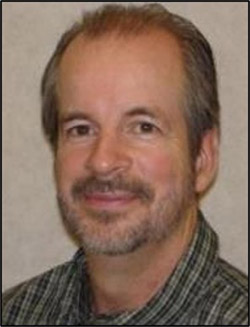 Lloyd Dunlap (dunlaplloyde@gmail.com)
Lloyd Dunlap (dunlaplloyde@gmail.com)
Lloyd E. Dunlap retired and now is an ITRC Emeritus member. Lloyd worked all his 30+ year career on special projects in the hydrocarbon remediation area. He has experience in environmental, energy, and regulatory issues, plus RCRA Corrective Action and Strategic Planning for complex sites. Lloyd worked in multiple environmental positions at BP from 1982 until 2012. He managed projects under the jurisdiction of Resource Conservation and Recovery Act (RCRA), Comprehensive Environmental Response, Compensation, and Liability Act (CERCLA), the European Union, administrative orders on consent, and state programs in nearly every state. He has authored numerous publications and often speaks at environmental conferences about regulatory issues and trends. Lloyd earned a bachelor's degree in Geology from the University of Kansas in Lawrence, Kansas, in 1975 and a Master of Science in Geology/Hydrogeology from Kansas State University in Manhattan, Kansas, in 1977.
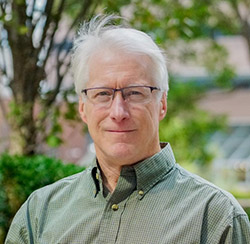 Tom Fox, Colorado OPS (tom.fox@state.co.us)
Tom Fox, Colorado OPS (tom.fox@state.co.us)
Tom Fox is an Environmental Protection Specialist in the Division of Oil and Public Safety (OPS) within the Colorado Department of Labor and Employment in Denver, Colorado. Tom has worked with the OPS since 2007. General duties include reviewing site characterization reports and corrective action plans; and providing guidance to optimize technical and economic feasibility of corrective actions, implementation/operation of systems, and reimbursement via the state fund. In addition, Tom has been involved in special projects such as developing electronic reporting formats, assessing the success of carbon injection for petroleum cleanups, and modifying Colorado's policy on LNAPL recovery. Prior to joining OPS, Tom was a petroleum geologist with ARCO from 1982-1986 doing exploration in the western US, and an environmental consultant on petroleum projects for several companies during 1986-2007. Tom has authored several articles, papers and presentations on assessment and corrective action techniques. Tom earned a bachelor's degree in earth science (geology) from Millersville State College (Pennsylvania) in 1980 and a master's degree in geology from Michigan State University in 1982.
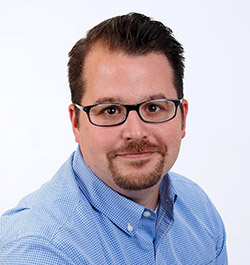 Steve Gaito, AECOM (steven.gaito@aecom.com)
Steve Gaito, AECOM (steven.gaito@aecom.com)
Steven Gaito is a NAPL Technical Specialist with AECOM specializing in developing LNAPL conceptual site models and remedial strategies at complex sites for auto, rail, energy and oil and gas clients. Steven participates in educational and research initiatives related to LNAPL, including supporting ITRC, contributing to ASTM guidance documents, and leading LNAPL training workshops.
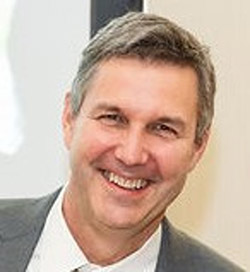 Matt Lahvis, Shell (matthew.lahvis@shell.com)
Matt Lahvis, Shell (matthew.lahvis@shell.com)
Matthew Lahvis is a Principal Engineer at Shell Oil Products US and provides support on soil and groundwater issues related to the company’s oil and gas operations. Matt received his PhD in Civil Engineering from Drexel University in 1993 and has authored several papers on vapor intrusion. Matt also serves as an Associate Editor for the Ground Water Monitoring and Remediation journal.
 Mark Lyverse, AECOM (Mark.Lyverse@aecom.com)
Mark Lyverse, AECOM (Mark.Lyverse@aecom.com)
Mark Lyverse currently works for AECOM. Previously, Mark was a senior staff hydrogeologist with Chevron’s Energy Technology Company. He is a member of the Site Assessment and Remediation Team in San Ramon, California and is a subject matter expert in LNAPL. Since 1990, he has provided technical advice both domestically and internationally to project managers and consultants in the areas of developing site strategies, site characterization, assessment, and remediation. His experience prior to Chevron includes 10 years with the U.S.G.S and 2 years in private consulting. Mark has been a member of the American Petroleum Institute's soil and groundwater technical group since 2002 and was industry co-chair the former RTDF LNAPL group from 2001-2005. In that role he made technical presentations to over hundreds of attendees from various regulatory and stakeholder groups. Mark earned a bachelor of science degree in forestry from Utah State in Logan in 1977 and a master's degree in Water Resources (specialization in hydrology) from the University of Wyoming in Laramie in 1981
 Diana Marquez (dianaymarquez@gmail.com)
Diana Marquez (dianaymarquez@gmail.com)
Diana Marquez retired as an Associate Toxicologist with Burns & McDonnell, where she started in June 1995. She served as the company's National Practice Leader for Risk Assessment Services. She has more than twenty years of risk assessment experience and has worked with a wide variety of sites under CERCLA, RCRA, and state-led programs. She has successfully completed work nationwide for both human health risk assessments and the determination of site-specific cleanup levels. She has direct experience working with large PRP groups on complex sites that require careful negotiations with regulators. Through this experience, she has gained in-depth knowledge of state and federal regulations. She authored 15+ publications on risk assessment, risk-based corrective actions, and vapor intrusion. Diana earned a bachelor's degree in biology from Villanova University in Villanova, PA in 1991 and a master's degree in toxicology from University of New Mexico in Albuquerque, NM in 1992.
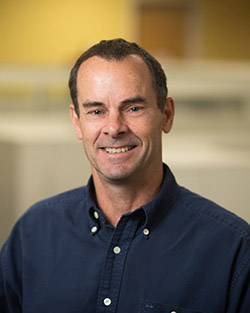 Chris Mulry, GES Inc. (CMulry@gesonline.com)
Chris Mulry, GES Inc. (CMulry@gesonline.com)
Christopher Mulry, P.G. is a Vice President and Principal Hydrogeologist based out of GES' Maryland office. He has a diverse background in environmental investigations, risk management and the design, operation and maintenance of soil and groundwater remediation and management programs — primarily at petroleum facilities. He has served with GES in various technical and managerial capacities since 1986 and has worked at project sites in the US and internationally. Mr. Mulry has been responsible for completing investigative and remediation programs in a wide range of site settings with an emphasis on Conceptual Site Model development. He has experience with direct sensing and geophysical tools and techniques as well as multi-level evaluations in complex and fractured rock settings. Mr. Mulry has presented technical topics on a wide range of subjects including fractured rock characterization, LNAPL behavior and petroleum vapor intrusion. He also leads an internal group of hydrogeologists at GES that focuses on technical innovation, quality and training. Mr. Mulry is a licensed professional geologist in the states of Delaware, Pennsylvania Virginia and New York. Mr. Mulry has a BS in Geology from the University of Delaware and an MS in Geology from the University of Maine
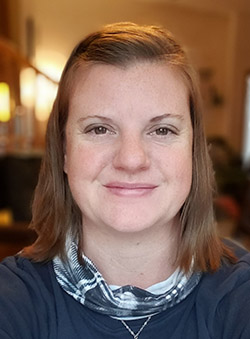 Shannon Suggs, NDDEQ (ssuggs@nd.gov)
Shannon Suggs, NDDEQ (ssuggs@nd.gov)
Shannon Suggs works in the Groundwater Protection Program at the North Dakota Department of Environmental Quality (NDDEQ) as the Source Water Protection Coordinator for the state. She is also a project manager of several department wide projects including the NDDEQ PFAS Assessment and North Dakota Risk-Based Corrective Action (NDRBCA). Shannon supports source water evaluation and assessment, risk evaluation and remediation of contaminated sites, Underground Injection Control regulation and inspections for Class I and Class V facilities and in tandem with the ND Department of Mineral Resources, review of Class VI facilities permit applications. As needed, she consults for other NDDEQ programs, generally related to groundwater modeling and/or sampling reviews. Shannon has undergraduate degrees in Environmental Geosciences and Geology and a MS in Geology and certificates in Geographic Information Systems and Environmental Risk Assessment.
 Laura Trozzolo, TRC Companies (LTrozzolo@trccompanies.com)
Laura Trozzolo, TRC Companies (LTrozzolo@trccompanies.com)
Laura Trozzolo leads TRC's Risk-Based Modeling / Risk Assessment Practice for TRC. In this role, Laura provides technical and regulatory oversight for a multitude of TRC projects and leads the company's Risk Assessment Center of Research and Expertise (CORE) team, while supporting professional development of TRC's risk assessment staff. Laura has been with TRC for 10 years as a senior risk assessor in TRC's Fort Collins, Colorado office. She has 29 years of experience in human health risk assessment and risk management services for a multitude of sites, including US military installments, active/former refineries, and rail yards. She also serves as a technical specialist on fate and transport issues for TRC, including vapor intrusion, soil migration to groundwater, and groundwater lateral transport pathways, in addition to human health risk assessment services, including project/data management, and regulatory compliance for emerging contaminants, including PFAS.
Moderator:
ITRC Training Program (itrc@itrcweb.org)
Webinar Slides and References:
Additional Resources:
Thank you for participating in our webinar. We would like to receive any feedback you might have that would make this service more valuable.
Help & FAQs
- Frequently Asked Questions
- Content Questions?
Call ITRC Training Program at 202-266-4932 or itrc@itrcweb.org - Technical Problems?
Leave us a comment - Cancel Your Registration
- My Participation Records
- CEU Credits and PDHs
Zoom Resources
Before Webinar Day
This seminar will be delivered through Zoom. Participants are encouraged to update to the latest version of the Zoom application for the best experience.
If you are unable to install the Zoom application, most functions will be available if you join just using a modern web browser such as Chrome, Edge or Firefox. We strongly encourage you to run the Zoom Meeting Test prior to attending this webinar. Technical support on the day of the webinar will be very limited and subject to significant delays.
Backup Conference Call
If you cannot participate using online audio, you may join the optional call in line. After checking in for the live event using the instructions listed below, you will see several options to participate. Please click the links in option 4 to follow along by phone and obtain the call in number. If you cannot access the phone number, you may request the call in line from the event moderator in the Q&A or send an email to Jean Balent at balent.jean@epa.gov
Click on "Join Webinar" at the top of this screen, enter your exact first and last name as you registered and enter the number of people attending at your location (including yourself). You should then be taken to the Zoom meeting room. Join with Zoom Application: For those joining with the Zoom application, you may be prompted to sign with a zoom account or join as a guest without signing in.
If joining as a guest, you will be prompted to enter your name and email address. Remember your name, image, video or voice may be visible to others in the live event. When done, click "Join" When it is time for the live event to start, the meeting host will admit you to the live Zoom meeting. Join via web browser (without the Zoom Application): For those joining with a web browser, you may close any pop ups prompting you to download the Zoom app. The next window will allow you to enter your name (first name and last name) and check the box that you are not a robot. Click the blue join button. You may also be asked to provide your email address before joining the room. Remember your name, image, video or voice may be visible to others in the live event. When done, click "Join" When it is time for the live event to start, the meeting host will admit you to the live Zoom meeting. You may need to periodically refresh the browser window to confirm if the host has admitted you. The presenters will control what slide you are viewing. You may submit questions online for the instructors to answer during the webinar by typing in the "Q&A" area. It is not necessary to wait until the question and answer periods to submit questions. At the end of the webinar you will be guided to our feedback form and links to additional resources, including the complete presentation. These links will remain active after the webinar. Provided for your convenience. Importing or accepting the invitation within this iCalendar file is not required, and declining the invitation does not cancel your registration. For additional information on iCalendar, please see our
iCalendar Help It is EPA's policy to make reasonable accommodation to persons with disabilities wishing to participate in the agency's programs and activities, pursuant to the Rehabilitation Act of 1973, 29 U.S.C. 791. Any request for accommodation should be made to ITRC Training Program at 202-266-4932 or itrc@itrcweb.org, preferably one week or more in advance of the seminar, so that EPA will have sufficient time to process the request. EPA would welcome specific recommendations from requestors specifying the nature or type of accommodation needed. EPA welcomes specific recommendations from requestors specifying the nature or type of accommodation needed. Please note that CLU-IN provides both alternate phone call-in options and closed captioning for all webinars, and requests for these specific accommodations are not necessary.
Webinar Day, Checking In

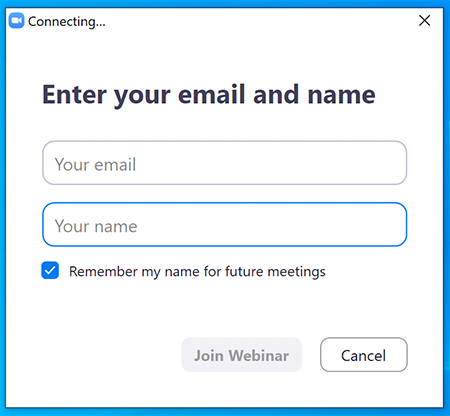
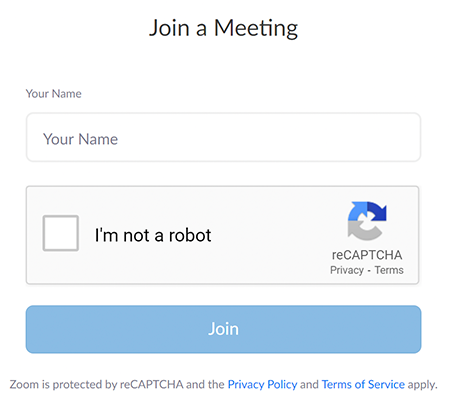
Moving Through Slides
Feedback & Links to Additional Resources
iCalendar File
Rehabilitation Act Notice for Reasonable Accommodation
Rehabilitation Act Notice for Reasonable Accommodation
It is EPA's policy to make reasonable accommodation to persons with disabilities wishing to participate in the agency's programs and activities, pursuant to the Rehabilitation Act of 1973, 29 U.S.C. 791. Any request for accommodation should be made to ITRC Training Program at 202-266-4932 or itrc@itrcweb.org, preferably one week or more in advance of the webinar, so that EPA will have sufficient time to process the request. EPA would welcome specific recommendations from requestors specifying the nature or type of accommodation needed. EPA welcomes specific recommendations from requestors specifying the nature or type of accommodation needed. Please note that CLU-IN provides both alternate phone call-in options and closed captioning for all webinars, and requests for these specific accommodations are not necessary.
Webinar Recording
By participating in this CLU-IN webinar, you automatically agree to authorize recording of audio and visual content presented during this live event and consent to subsequent use of this recording in the public domain by the U.S. Environmental Protection Agency. This recording may include questions, comments and poll responses provided by you during the live event in addition to your name, voice, image or likeness. This recording will be made available after the conclusion of the live event as part of the CLU-IN webinar archives, and will remain available indefinitely. If you do not wish to consent to the recording, please do not join the live event, and contact Jean Balent at 202-566-0832 or balent.jean@epa.gov to discuss your concerns.
Content Disclaimer
This webinar is intended solely to provide information to the public. The views and opinions expressed as part of this webinar do not necessarily state or reflect those of the U.S. Environmental Protection Agency. It is not intended, nor can it be relied upon, to create any rights enforceable by any party in litigation with the United States, or to endorse the use of products or services provided by specific vendors. With respect to this webinar, neither the United States Government nor any of their employees, makes any warranty, express or implied, including the warranties of merchantability and fitness for a particular purpose, or assumes any legal liability or responsibility for the accuracy, completeness, or usefulness of any information, apparatus, product, or process disclosed, or represents that its use would not infringe privately owned rights.

